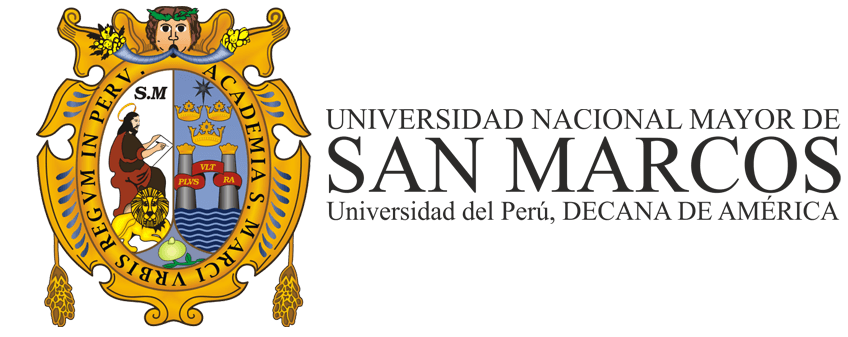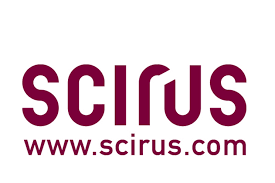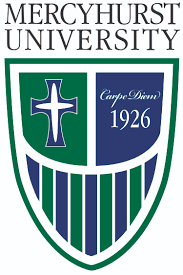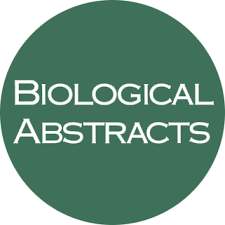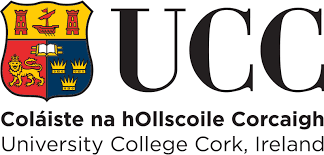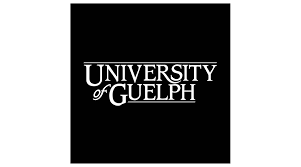PARASITE FAUNA IN VARIETIES OF THE ORNAMENTAL FISH CARASSIUS AURATUSAND DESCRIPTION OF THE BIOLOGICAL CYCLE OF ICHTHYOPHTHIRIUS MULTIFILIIS (CILIATEA ICHTHYOPHTHIRIIDAE), CAUSING MORTALITIES IN A HATCHERY FROM LIMA, PERU, 2007
DOI:
https://doi.org/10.24039/rnh201261999Keywords:
ciliates, golden carp, haemorrhage, Ichthyophthirius.Abstract
An amateur in Lima, Peru that deals with the breeding of varieties of the ornamental fish, Golden carp,(Carassius auratus), reported high occurrence of mortalities, 60%-70% of 2000 specimens in a few,days. Of these, 15 specimens (varieties of black telescope, oranda, red cap, lion's head and green coral),were selected in order to study and evaluate the gills and skin. Adult mobile spores and different,juvenile stages of Ichthyophthirius multifiliis "Ich", were found. The “disease of the white point” was,also observed in the presence of monogenean Gyrodactylus sp. and Dactylogyrus sp. Protozoans and,monogeneans were found to be the cause of mortality that also provoked an increase of mucus in the,gills as well as a strong detachment of the epidermis and the loss of,the caudal fin. Only one specimen,was found with hemorrhage in the bottom of the left eyeball. In order to control mortality, we applied,diluted formaldehyde, potassium permanganate and methylene blue. The best survival was obtained,with the formaldehyde treatment. In the Laboratory of Aquatic Biopathology of the Faculty of,Fisheries (UNALM), three specimens were placed in a fish tank with saline solution; Three days later,,the presence of large amounts of yellowish balls and numerous mobile young spores of the "Ich" were,observed on the surface of the aquarium. Furthermore, specimens of Zschokkella sp. were found in the,gallbladder; Thellohanellus sp. in both gills and internal structures. Hyphae of unidentified fungi were,also found inside the liver of some fishes. The parasites in C. auratus, the life cycle of I. multifiliis , its,histological alterations, and the success in treatment with formaldehyde are reported for the first time.
Downloads
Published
How to Cite
Issue
Section
License
Copyright (c) 2021 Neotropical Helminthology

This work is licensed under a Creative Commons Attribution-NonCommercial-NoDerivatives 4.0 International License.
OBJETO: El AUTOR-CEDENTE transfiere de manera TOTAL Y SIN LIMITACIÓN alguna al CESIONARIO los derechos patrimoniales que le corresponden sobre la (s) obra(s) tituladas: xxxxxxxxxxxxxxxx, por el tiempo que establezca la ley internacional. En virtud de lo anterior, se entiende que el CESIONARIO adquiere el derecho de reproducción en todas sus modalidades, incluso para inclusión audiovisual; el derecho de transformación o adaptación, comunicación pública, traducción, distribución y, en general, cualquier tipo de explotación que de las obras se pueda realizar por cualquier medio conocido o por conocer en el territorio nacional o internacional.
REMUNERACIÓN: La cesión de los derechos patrimoniales de autor que mediante este contrato se hace será a título gratuito.
CONDICIONES Y LEGITIMIDAD DE LOS DERECHOS: El AUTOR-CEDENTE garantiza que es propietario integral de los derechos de explotación de la(s) obra(s) y en consecuencia garantiza que puede contratar y transferir los derechos aquí cedidos sin ningún tipo de limitación por no tener ningún tipo de gravamen, limitación o disposición. En todo caso, responderá por cualquier reclamo que en materia de derecho de autor se pueda presentar, exonerando de cualquier responsabilidad al CESIONARIO.
LICENCIA DE ACCESO ABIERTO: El AUTOR-CEDENTE autoriza que manuscrito publicado en La Revista Neotropical Helminthology permanece disponible para su consulta pública en el sitio web https://www.neotropicalhelminthology.com/ y en los diferentes sistemas de indexación y bases de datos en las que la revista tiene visibilidad, bajo la licencia Creative Commons, en la modalidad Reconocimiento-No comercial- Sin Trabajos derivados –aprobada en Perú, y por lo tanto son de acceso abierto. De ahí que los autores dan, sin derecho a retribución económica, a la Asociación Peruana de Helmintología e Invertebrados Afines (APHIA), los derechos de autor para la edición y reproducción a través de diferentes medios de difusión.

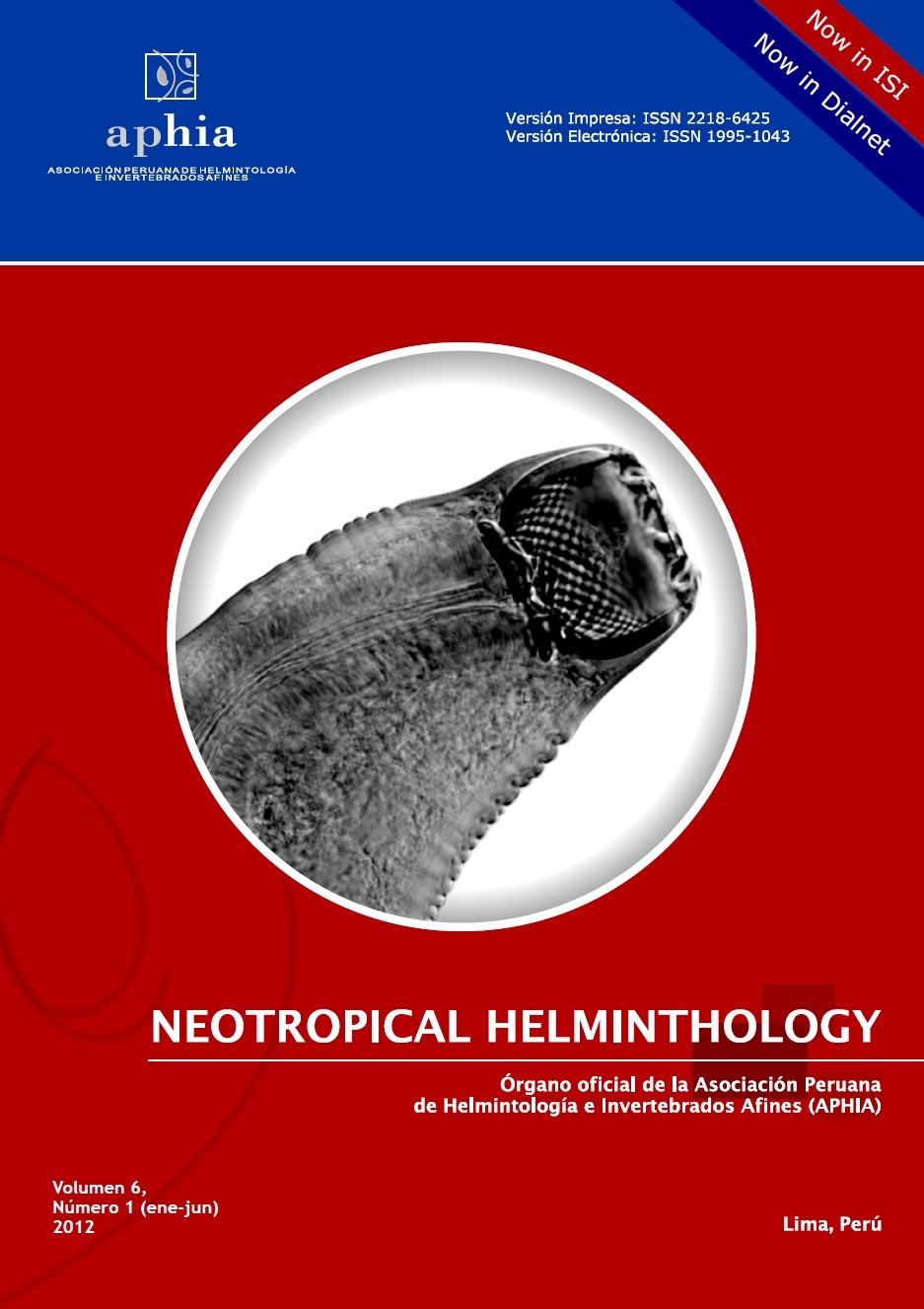
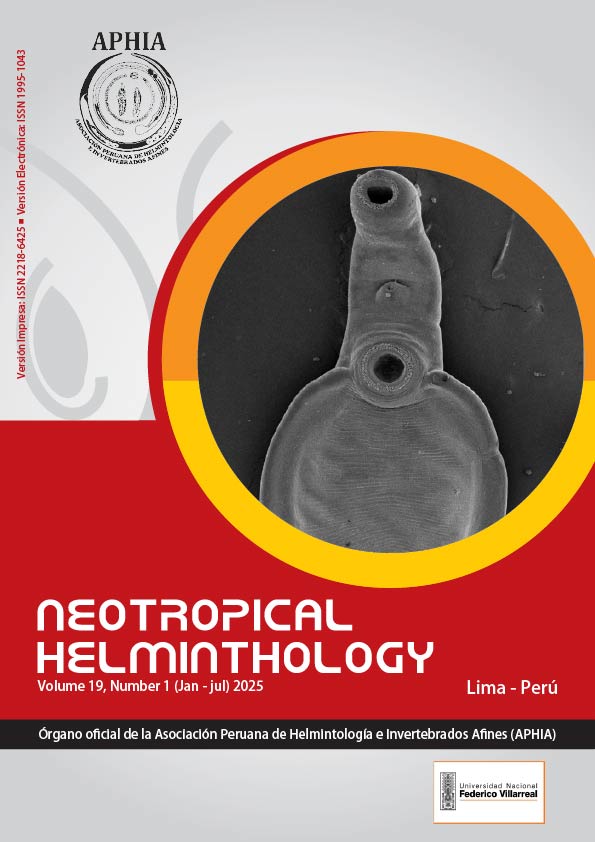 Numero 2 Volumen 19 - 2025 (versión Anticipada)
Numero 2 Volumen 19 - 2025 (versión Anticipada)




















